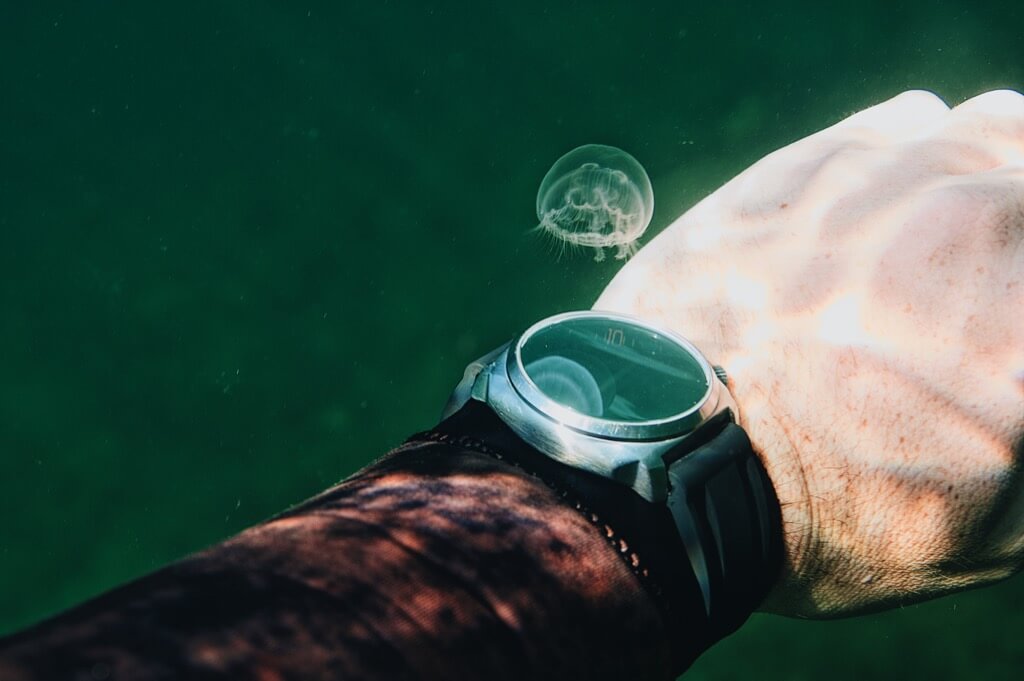There’s a lot of misinformation about treating jellyfish stings, and it’s time to set the record straight. Contrary to the enduring myth, urinating on a jellyfish sting is not an effective treatment. It can exacerbate the pain and severity of the sting. Similarly, applying fresh water or ice to the sting area without proper initial treatment is another common mistake. These actions can worsen the sting, potentially leading to severe complications, especially for vulnerable individuals like older people and children.
To effectively treat a jellyfish sting, it’s crucial to understand how these marine creatures inflict harm. Jellyfish stings are caused by nematocysts, tiny spine-covered tubules found on their tentacles. These spines attach to your skin, and when the nematocysts are triggered, they inject chemicals into your body. In some cases, thousands of nematocysts can latch onto your skin following contact with a jellyfish tentacle, and not all may fire immediately.
When introducing substances like urine or fresh water to a jellyfish sting, you alter the tonicity—the concentration of solutes in the surrounding environment. This change can trigger the nematocysts that haven’t yet fired, leading to a more severe reaction as more stinging chemicals are released. Therefore, these well-intended but misguided first-aid measures should be avoided.
Proper First Aid for Jellyfish Stings
So, what should you do if you or someone else gets stung by a jellyfish? Here’s a step-by-step guide:
- Rinse the affected area with vinegar (acetic acid) or saltwater, not fresh water. Vinegar can help neutralize some toxins and prevent unfired nematocysts from releasing more venom.
- Use a pair of tweezers to remove any tentacles still attached to the skin gently. Avoid rubbing the area, as this can cause more nematocysts to fire.
- Soak the affected area in hot water (not scalding) for 20 to 45 minutes. The heat can help reduce pain and inactivate toxins.
- If the sting covers a large area, if the victim experiences severe pain or systemic symptoms (like difficulty breathing), or if the sting is from a dangerous species, seek medical attention immediately.
The Importance of Protective Gear
When venturing into jellyfish-prone waters, wearing the proper protective clothing is crucial. A full-body wetsuit or specially designed sting-proof swimwear acts as a shield, significantly reducing the risk of stings. These garments cover most of your body, exposing minimal skin to potential jellyfish tentacles. Not only do they offer protection against stings, but they also provide additional benefits like thermal insulation and sun protection, enhancing your overall sea-swimming experience.
Local Jellyfish Reports
Staying informed about jellyfish activity in your swimming area can significantly enhance your safety. Beaches prone to jellyfish often have warning signs or flags indicating the current risk level. Local news, beach lifeguards, and marine websites can also provide valuable updates. Being aware of these reports helps you make informed decisions about when it’s safe to swim and when to stay on shore.
Risks Associated with Beached Jellyfish
One common misconception is that beached or dead jellyfish are harmless. In reality, these jellyfish can still pose a threat. Their nematocysts can remain active after death, capable of delivering painful stings upon contact. So, you should avoid touching any jellyfish you encounter on the beach. Educate children about these risks, as curiosity might lead them to feel or examine beached jellyfish.
Aside from the main precautions, there are a few more steps you can take to ensure your safety:
- Choose swimming spots where lifeguards are present. Lifeguards can provide immediate assistance and first aid in case of a jellyfish sting.
- Some products claim to repel jellyfish or provide a barrier against stings. While their effectiveness can vary, they might offer an extra layer of protection.
- Different jellyfish species have different levels of threat. Knowing which species are prevalent in your area can help you understand the risks and the necessary precautions.
Different Jellyfish Species to Watch Out For
The Irukandji
One notable jellyfish to be aware of is the Irukandji. Found in Australian waters, these jellyfish are tiny, often no larger than one cubic centimeter. Despite their size, Irukandji stings can be dangerously potent, leading to severe pain, nausea, and even hospitalization. Their small size makes them difficult to spot in the water, so exercising caution in areas where they are known to inhabit is crucial.
Box Jellyfish
The Box Jellyfish, often found in the waters of the Indo-Pacific region and northern Australia, is notorious for its deadly sting. Recognizable by its box-like shape and transparent body, it has tentacles that can reach up to 3 meters long. The venom of the Box Jellyfish can cause cardiac arrest, extreme pain, and even death within minutes. Swimmers should be extremely cautious during the Box Jellyfish season, which typically runs from October to May.
Portuguese Man of War
The Portuguese Man o’ War is a siphonophore often mistaken for a jellyfish. Found in warmer seas, its distinctive blue or purple balloon-like float can be seen above water, with tentacles extending up to 50 meters below the surface. Its sting is excruciatingly painful and can cause welts on human skin. Sometimes, stings can lead to fever, shock, and respiratory distress.
Lion’s Mane Jellyfish
The Lion’s Mane Jellyfish, typically found in colder, northern waters of the Atlantic and Pacific Oceans, is the world’s largest jellyfish species. Its tentacles can span over 30 meters. While its sting is not usually fatal to humans, it can cause severe pain, redness, and blistering. In some cases, stings may result in muscle cramps and breathing difficulties.
Moon Jellyfish
The Moon Jellyfish, easily identified by its translucent bell with four horseshoe-shaped gonads inside, is common in most oceans. While its sting is generally mild, causing only slight discomfort or itching, it can still pose a risk to individuals with allergies or sensitive skin. Avoiding contact is the best precaution.
Purple Jellyfish
The Purple Jellyfish, known as the mauve stinger, is found in the Mediterranean Sea and the Atlantic Ocean. Its sting can cause a burning sensation, itching, and skin rashes. In some cases, symptoms can escalate to nausea and muscle cramps. The jellyfish is recognizable by its purplish bell and long, thin tentacles.
So, you’ve become an expert on our ocean’s more prickly residents. Remember, a day at the beach or a dive into the deep blue doesn’t have to be a scene from an underwater thriller. Equipped with your newfound knowledge of jellyfish and their stings, you’re ready to face these gelatinous drifters confidently. Whether it’s donning that stylish wetsuit, watching for warning signs or mastering the art of tentacle removal (tweezers at the ready!), you’re all set.




